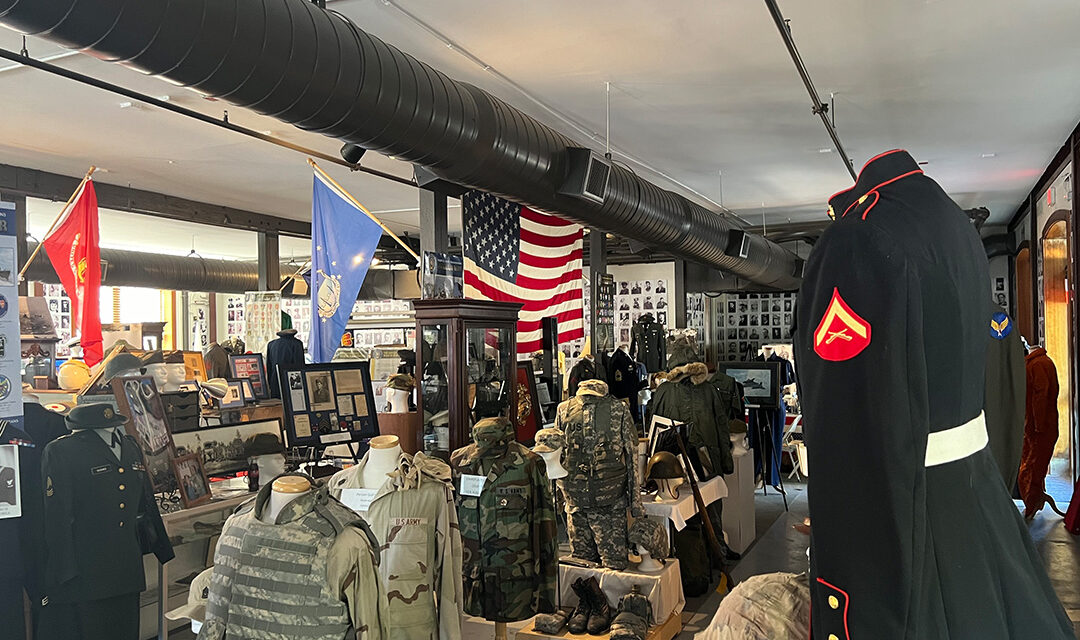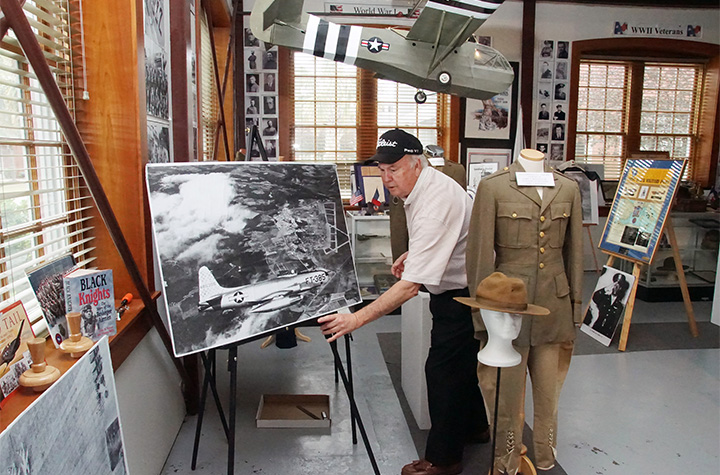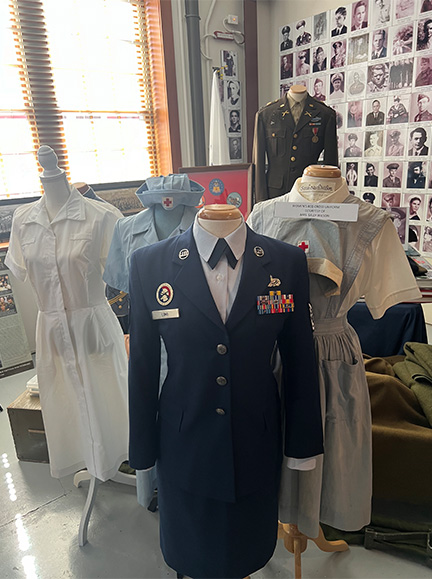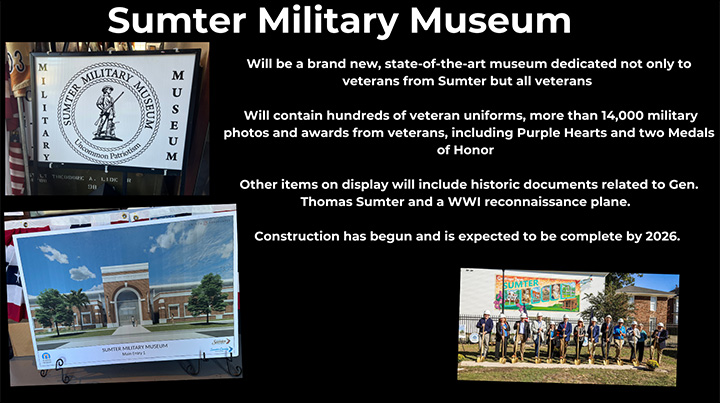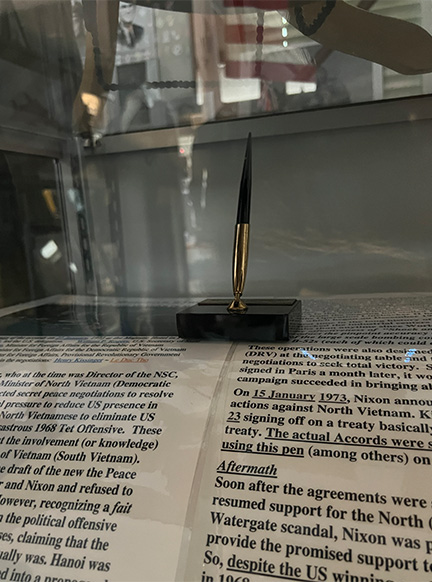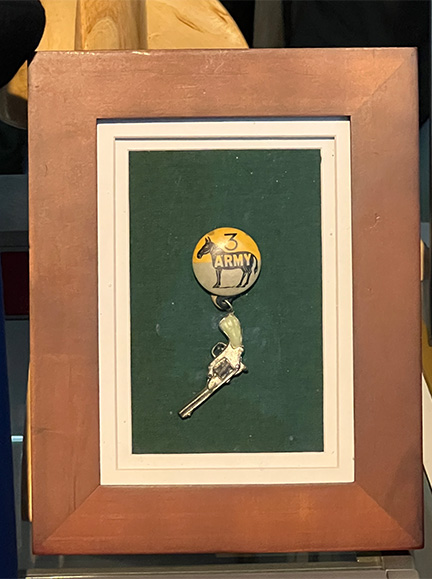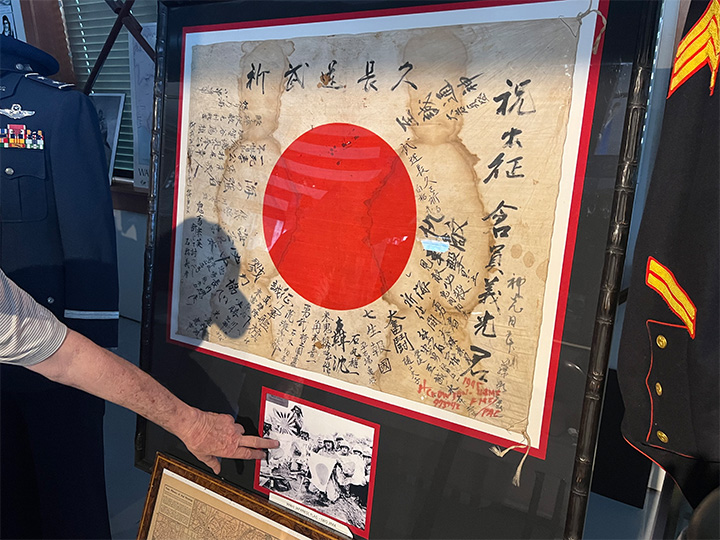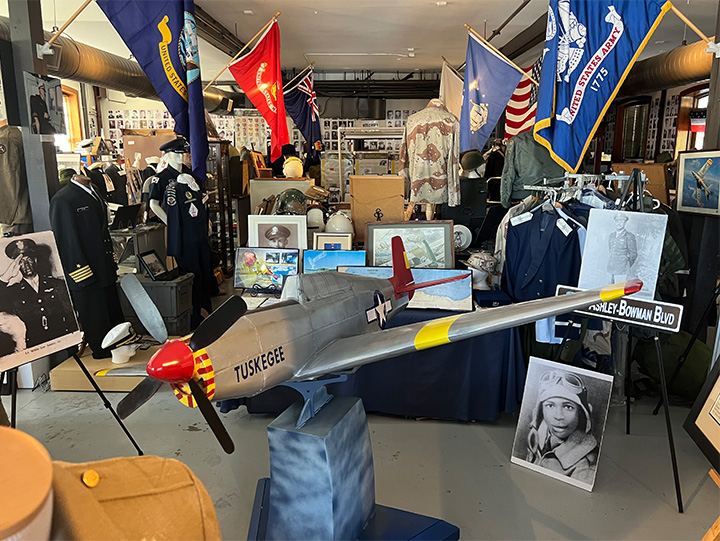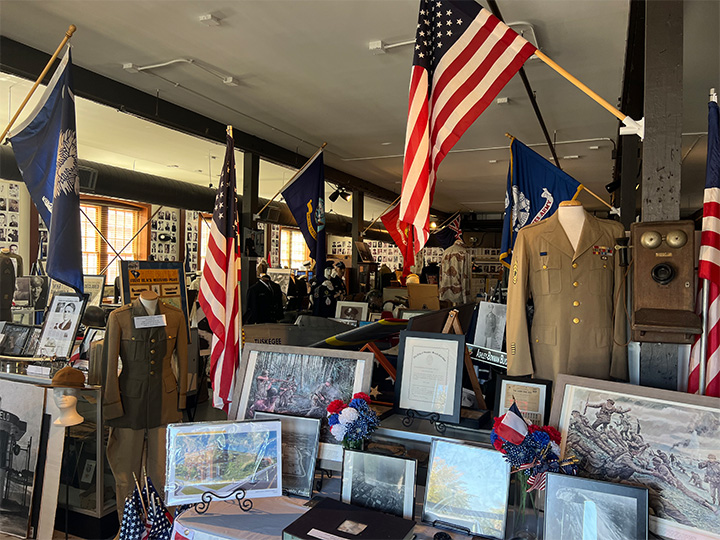Sammy Way’s collection of military memorabilia is voluminous. (Photo by Caleb Deaton/Carolina News & Reporter)
Sammy Way sits at his desk in his office at The (Sumter) Item newspaper, hard at work. The paper’s archivist is surrounded by scanning machines, computers, old papers and books from Sumter’s past.
“I scan, I write, I catalogue and I fill up these external hard drives for the paper,” Way said.
This type of work is familiar territory for Way, given his hobby of collecting and preserving historical artifacts. Way, who taught history at Sumter High School for 30 years, has dedicated the past few decades into collecting and archiving thousands of military memorabilia from those who served in the United States military.
The City of Sumter has partnered with Way and the Sumter Museum to ensure this impressive collection is preserved.
“The city really saw that as a treasure that we wanted to preserve for future generations to see,” said Sumter Museum executive director Annie Rivers. “They have been working with Dr. Way for a while and trying to figure out how to make that happen.”
The new Sumter Military Museum began construction with a groundbreaking ceremony Oct. 16. It will see Way’s collection, along with other artifacts from the Sumter County Museum, which will be housed in a state of the art building for visitors to learn of the military history of Sumter and beyond.
“I have over 14,000 military photos that we’re going to put on a 10-by-10 wall that is continually rotating,” Way said. “And if a child walks up and says, ‘That’s my grandfather,’ we’re going to have a machine that punches out a dog tag, and he gets to wear a dog tag with his grandfather’s name.”
Other highlights of the collection include more than 400 uniforms, including some from different countries and wars, medals like the Distinguished Flying Cross, Purple Heart and the Medal of Honor, and one of the few original pens used in the signing of the Paris Peace Accords that ended U.S. involvement in the Vietnam War.
Sumter’s History of Service
Sumter County itself has a rich history with military service.
Shaw Air Force Base, originally Shaw Field, is only a few miles from downtown Sumter and is one of the oldest and largest Air Force establishments.
It’s that shared history with the base that helped Sumter be recognized as a WWII Heritage City by the National Park Service. Shaw saw thousands of pilots trained during the conflict, and even served as a POW camp for German soldiers toward the end of the war.
Mayor of Sumter David Merchant believes the designation will help highlight Sumter’s deep connection with service.
“This is a great honor for our community and a testament to our community motto, ‘Uncommon Patriotism,’ as well as the enduring legacy of our military and veterans,” said Merchant. “This designation will enhance our community efforts to preserve and promote our historical sites, attract visitors and historians, and foster a greater appreciation of our heritage.”
Rivers said that discussions about the museum expansion began around 2019, with state funding being a crucial reason for the project beginning.
She also highlighted Way as another great help.
“He’s been incredibly helpful in helping us make sure we have all the resources we need for exhibits and programs,” Rivers said. “And you can just see the passion in what he does.”
Way’s history with history
Way, who served in the U.S. Army Reserves, has harbored a love of history since starting school.
“It started in about the third grade,” Way said. “I would go to the (the city’s) Carnegie Library at 3:30 and wouldn’t leave until 7:30. I read everything I could. I was fascinated with (Thomas) Jefferson, (George) Washington and the Civil War.”
Way’s interest in those history classes lasted throughout his school life. He learned much from his professors about not just history but the presentation of it as well.
While he was at Wingate Junior College, one of Way’s professors left a large impact on him. The professor had suffered polio and had to rely on his son to push him in a wheelchair. Despite these limitations, the professor managed to grab Way’s attention.
“It was not so much what he was talking about, but (he gave) you the feeling that he was there,” Way said.
Way would graduate from the University of South Carolina with a bachelor’s degree in science in 1971 and a master’s degree in education in 1974. He would go on to teach at Sumter High School, where he also coached football, basketball, track, cross country, tennis and golf.
He also used what he learned from his professors as a lesson on how to present the past.
“People who look at history as boring, it’s because of the way you teach history,” Way said.
Way described his methods of teaching as a more “hands on” experience. He wanted his students to find the connections between history and their own surroundings.
One of these projects involved the naming of streets after those in Sumter who died in WWII.
“We lost 133 men, and the city decided to name the streets after the killed men in 1948,” Way said.
Way’s students investigated and found that, at the time, only 68 of the 133 had named streets after them. After some motivation from the students and Way calling in a favor, the remaining 65 were honored rightly.
“And then the kids came back and said, ‘Why don’t we do the rest of them?’” Way said. “I said, ‘What do you mean the rest?’ They said, “Well, we’ll start at World War I and go all the way through Afghanistan.’”
Indeed, Sumter now has a total 233 streets named after residents killed in action. They honor veterans from the first World War all the way to the War on Terror. And it was there at the ceremony for them that the collection first started.
“When we were doing the streets, a lady brought in a uniform,” Way said. “Her grandfather was killed as a part of the 101st Airborne Division.”
She gave the uniform to Way to keep for his students to see and learn from.
“And that kind of started the interest,” Way said. “The kids were interested in what these people looked like. So, I started collecting pictures. What did they dress like? So, I started collecting what kind of awards they got. Then people began to realize that rather than throwing away dad’s old uniform, ‘Bring it to Sammy Way, he’ll take anything.’”
What’s in store for Way’s collection
The collection took a while to become what it is today, an enormous assortment of historical artifacts, each with a fascinating story behind it.
Way spoke with soldiers in and acquired artifacts from many famous divisions in the military, such as the Tuskegee Airmen, the 101st Airborne Division, and Gen. George Patton’s Third Army.
The artifacts include uniforms going back to American Civil War and the Spanish-American War.
The new museum will have air-conditioned storage for uniforms, sections dedicated to each war, sections dedicated to the generals from South Carolina and even a reconstructed Bristol F.2B biplane re-assembled from several original examples, according to Rivers.
Way’s collection resides in the James Clyburn Intermodal Transportation Center in Sumter, which is open to the public for viewing. The museum is open from Tuesday 9 a.m. to 4 p.m., Wednesday and Thursday noon to 4 p.m., Friday 10 a.m. to 4 p.m. and Sunday from 1 p.m. to 4 p.m.
The collection will be moved into the new museum once its construction is completed in 2026.
Way hopes the museum will become a great learning experience for future generations.
“This is not going to be only an exhibit where you look and see, but you’re going to look, see and learn,” Way said.
Way takes great caution and care when archiving artifacts or setting up the displays for the public (Photo courtesy of The Sumter Item/Carolina News & Reporter)
The collection has hundreds of uniforms ranging from WWI to Afghanistan, and from all branches of the military, including those on the Homefront. (Photo by Caleb Deaton/Carolina News & Reporter)
The future Sumter Military Museum hopes to be a beacon of remembrance and education for both the past and future generations. (Graphic by Caleb Deaton/Carolina News & Reporter)
This pen is one of the 12 pens used to sign the Paris Peace Accords, which saw the U.S. end military involvement in the Vietnam War. (Photo by Caleb Deaton/Carolina News & Reporter)
An original Third Army pen from WWII. Famously led by Gen. George Patton, the group gained notoriety during the Battle of the Bulge. (Photo by Caleb Deaton/Carolina News & Reporter)
A Japanese flag that was captured by U.S. forces during the battle of Iwo Jima. On the flag is a battle prayer and the names of Japanese soldiers who fought on the island (Photo by Caleb Deaton/Carolina News & Reporter)
Way has artifacts from many famous fighting groups, such as the Tuskegee Airmen, the 101st Airborne Division and the Third Army. (Photo by Caleb Deaton/Carolina News & Reporter)
Way’s massive collection is open to the public now at the James Clyburn Intermodal Transportation Center in Sumter. (Photo by Caleb Deaton/Carolina News & Reporter)

